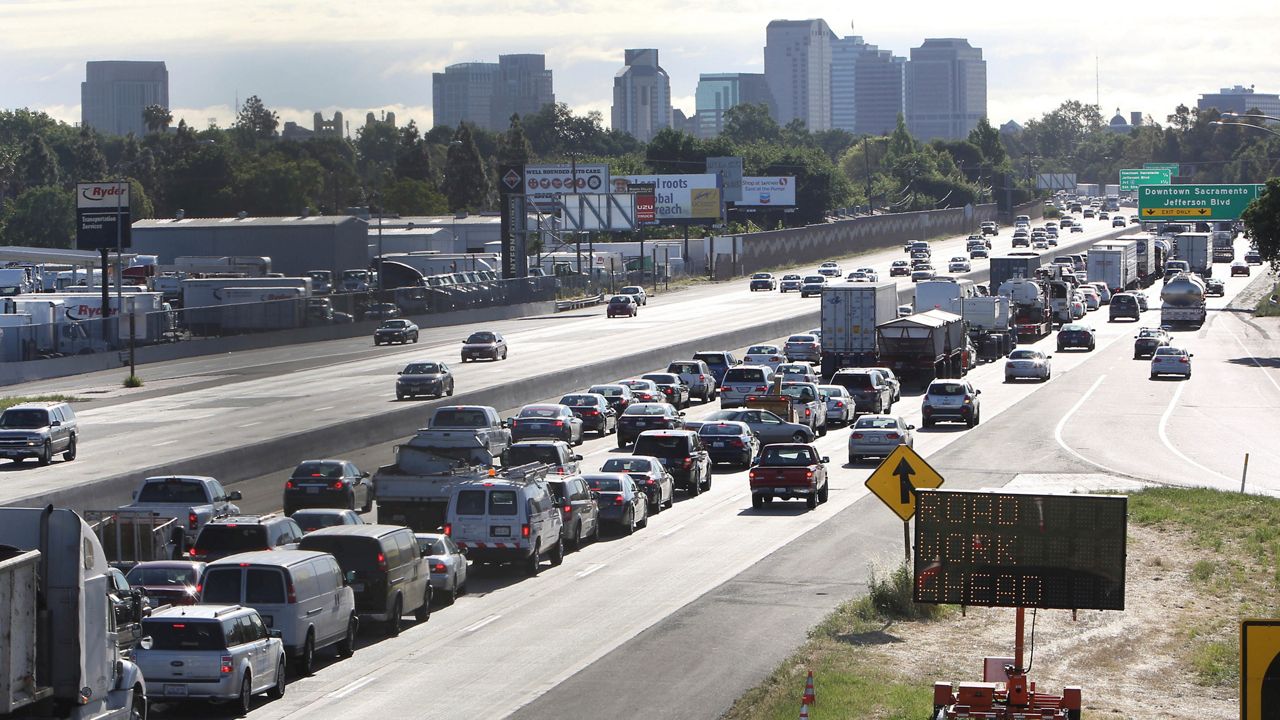SACRAMENTO, Calif. — The California Air Resources Board proposes that 35% of 2026 model year cars sold in the state be zero-emissions.
Issued Tuesday, the proposal is the board’s first step toward meeting the goals of an executive order Gov. Gavin Newsom issued in late 2020, mandating that 100% of new passenger vehicles sold in the state be emissions free by 2035.
“The proposed requirements show California is regaining its leadership in combating climate change,” said Don Anair, research and deputy director of the Clean Transportation Program with the nonprofit Union of Concerned Scientists. “With transportation the largest source of heat-trapping emissions in California and a significant source of harmful air pollution, the proposed sales standards are necessary and achievable.”
The Union of Concerned Scientists is among several environmental groups that are urging the Air Resources Board to act even more quickly to combat the most dire effects of climate change. Many of those groups are calling on the state to set a target of 75% electric car sales by 2030 and to establish incentives that will help offset the costs of transitioning to EVs for low-income households.
“We’re hoping for a mandatory requirement to get automakers to do their part in deployment of these vehicles in low-income communities,” said Greenlining Institute Environmental Equity Legal Counsel, Roman Partida-Lopez.
In addition to the ARB requiring automakers to develop less expensive EVs, to keep off-lease EVs in the state and to place discounted new electric vehicles in car share programs that would serve disadvantaged communities, the Greenlining Institute would like the board to place such cars into the clean vehicle incentive programs it already administers.
“Then we can make new vehicle purchases a reality for low-income households and not only rely on secondary markets as a way for low-income households to adopt electric cars,” Partida-Lopez said.
Right now, the ARB operates a scrap and replace program called Clean Cars For All that allows low-income individuals and those who live in disadvantaged communities to trade in their older, more polluting gas-powered vehicles and get $9,500 for a zero-emissions replacement. A Clean Vehicle Assistance program also provides $5,000 for low-income people to purchase a new or used EV.
“The issue is there isn’t a lot of availability of these vehicles, especially on the used market right now, so if we can figure out a creative way to increase the opportunities for them to access these cars through this rulemaking, we will be creating new avenues for ownership for low-income households,” Partida-Lopez said.
Transportation accounts for half of the state’s greenhouse gas emissions that contribute to climate change, according to the California Energy Commission. It also generates almost 80% of nitrogen oxide pollution, contributing to human health issues such as asthma, headaches, reduced lung function and strokes.
Ninety percent of Californians live in communities with unhealthy air, according to the American Lung Association. Seven of the country’s ten smoggiest cities are in California.
“If we move to zero emissions transport and electricity, California could see over $1.2 trillion in public health benefits between 2020 and 2050,” said Will Barrett, director of clean air advocacy for the American Lung Assn. Specifically, it would result in 110,000 fewer premature deaths, 3 million fewer asthma attacks and 13 million lost work days avoided because the air would be cleaner.
“These are high-stakes decisions being made,” Barrett said of the ARB’s EV sales targets. “Transportation decisions are ultimately public health decisions.”
The board’s proposed rule making comes amid a recent spike in gas prices that have dramatically increased interest in electric vehicles, over ten years after the first modern EVs came on the market. EV shopping consideration increased 69% in January when gas prices first began to increase, according to Cox Automotive.
Last year, electric vehicles made up 12.4% of total California auto sales, according to the nonprofit EV advocacy group Veloz. Nationally, EV sales in 2021 were 4%.
The ARB will consider comments on its proposed rule making for the next 45 days. It will vote on whether to adopt the proposal this summer.



